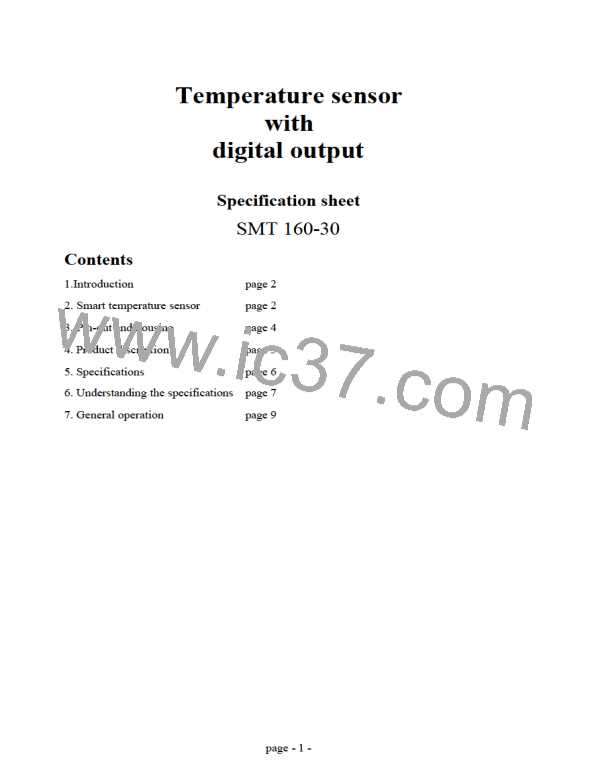6. Understanding the specifications.
The way in which the SMT160-30 is specified makes it easy to apply in a wide variety
of different applications. It is important to understand the meaning of the various
specifications and their effects on accuracy. The SMT160-30 is basically a bipolar
temperature sensor, with accurate electronics to convert the sensor signal into a duty
cycle. During production the devices are calibrated.
The output signal
As stated in the specifications the output is a square wave with a well-defined
temperature-dependent duty cycle. The duty cycle of the output signal is linearly related
to the temperature according to the equation:
D.C. = 0.320+0.00470*t
D.C. = duty cycle
t = Temperature in °C
Easy calculation shows that for instance that at 0 °C the
D.C.= 0.320 or 32.0 % and at 130 °C the
D.C.= 0.931 or 93.1 %
Total accuracy
The above mentioned equation is the nominal one. The maximum deviation from the
nominal equation is defined as total accuracy. With temperatures above 100 °C the
accuracy decreases.
Non linearity
Non-linearity as it applies to the SMT160-30 is the deviation from the best-fit straight
line over the whole temperature range. For the temperature range of -30 °C to +100 °C
the non-linearity is less than 0.2 °C (TO18).
Long-term drift
This drift strongly depends on the operating condition. At room temperature the drift is
very low (< 0.05 °C). However at higher temperatures the drift will be worse, mainly
because of changes in mechanical stresses. This drift is partly irreversible and causes
non-ideal repeatability and long-term effects. At temperatures above
100 °C but in the operating range a long-term drift better than 0.1 °C is to be expected.
page - 7 -

 ETC [ ETC ]
ETC [ ETC ]